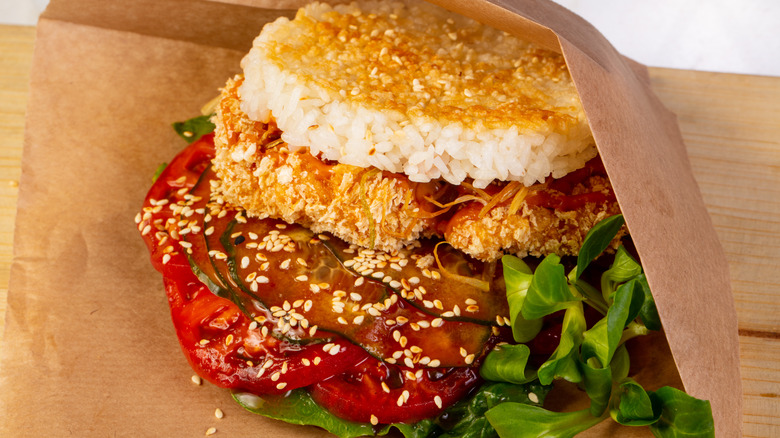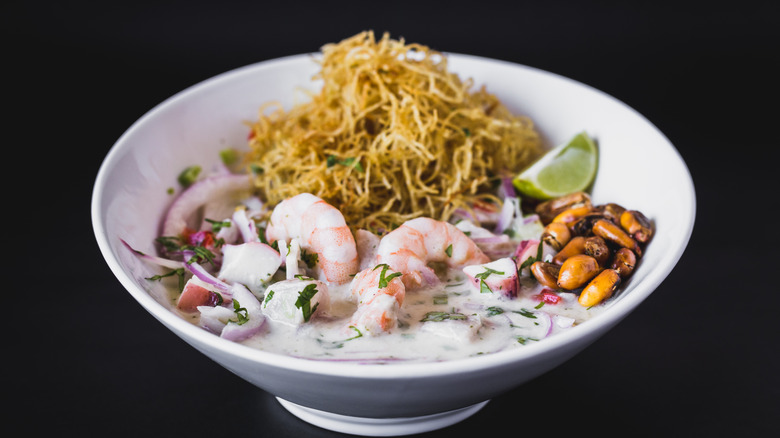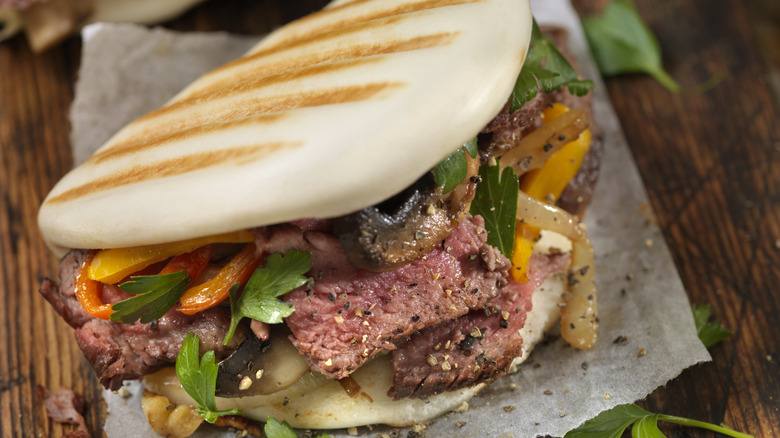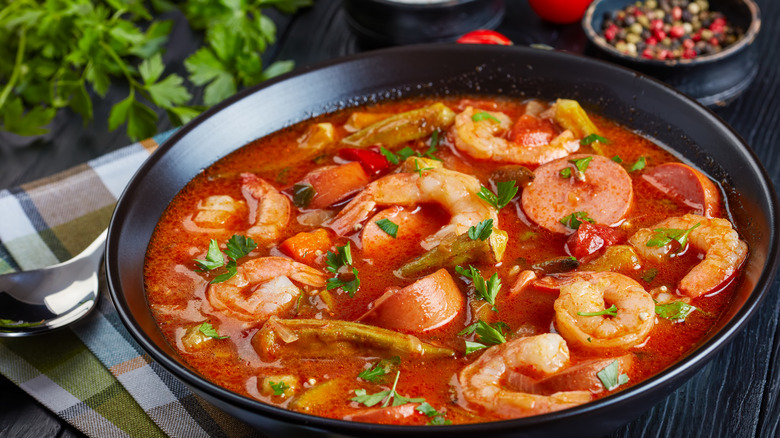What Is A Fusion Restaurant And How Do You Spot The Best Ones?
At its most basic, fusion cuisine combines the dishes, ingredients, or techniques of two or more distinct culinary traditions to make something new. Obvious examples of corned beef egg rolls, crispy rice hamburgers, taco pizza, or bulgogi burritos might come to mind, but there are many other foods that have become so accepted that they probably don't strike most people as being fusion dishes at all. That is because the practice of combining foods from different parts of the world is nothing new — throughout human history people have traveled, migrated, traded, colonized, and been colonized. All of that exchange is reflected in food.
Some foods were born along borders or because of immigration to a certain area like Indo-Chinese, Japanese-Peruvian, Chinese-Cuban, Punjabi-Mexican, Chinese-American, and Italian-American culinary traditions. Restaurants that showcase foods that reflect the unique history of a blended community are your best bet for finding great fusion food. Many people who know and love these foods however wouldn't consider this fusion because it is simply the food that represents their culture.
Fusion cuisine is also widely associated with pan-Asian foods because, in the 1970s, French chefs using Chinese and Vietnamese ingredients to spice up traditional, rich French cooking sparked a worldwide fusion movement. Like with any cuisine, some chefs do it well, and others, not so much. To find good fusion, the chef needs to truly understand both cuisines.
What makes a great fusion restaurant?
There are valid critiques of what fusion restaurants have come to mean, specifically the term "fusion" itself. However, if fusion is more simply understood as food that takes inspiration from multiple traditions, then there are many chefs that are doing great things — because of the loaded history, they just may not categorize their cooking as fusion. Good fusion does not dull down flavors. Instead, it reflects a deep understanding of the ingredients and traditions being used and pairs them in a way that makes sense. Whether a restaurant self-describes as fusion or not, look at the way they talk about their own ethos.
Are they simply generalizing dishes from a given country, or do they point to specific regional influences? Are any of the chefs or leadership from the places that the food is being inspired by? Is the restaurant respectful of the culture they are borrowing from, or do they resort to tropes, predictable pairings, or fetish-y decor? Do reviewers of the restaurants that hold the same identities feel the food did their culture justice?
With a deep understanding of food culture, dishes can be complementary rather than altered to fit one or another. They should be paired in a way that is respectful and additive on both sides. So, before you dine, look at reviews and investigate the menu itself to see how it describes the dishes.
Fusion has become a bit of a loaded word
The fusion movement in the 1980s and 1990s got an especially bad reputation for chefs clunkily throwing together disparate ingredients and calling the resulting dish a modern take when in reality, they lacked a nuanced understanding of the cuisine they were borrowing from. The widespread critique of fusion foods is that a chef takes a different cuisine and waters it down to appeal to a white, Western audience.
Wolfgang Puck put Asian fusion on the map with his Santa Monica eatery Chinois — literally meaning Chinese — where he applied French techniques to Asian ingredients. Puck created dishes like the buffalo chicken spring roll and the "Chinese" chicken salad that tosses a cruciferous slaw and fried wonton strips in a sweet soy and mustard vinaigrette. While very popular, this approach to Asian food has garnered quite a bit of criticism. Gazel Manuel explains in the journal Cultural Studies that "the juxtaposition between France, a country, and Asia, the largest continent in the world with hundreds of diverse cultures and culinary traditions, underscores the Eurocentric bias and implicit white European supremacy in today's culinary discourse."
Terms such as contemporary, modern, mash-up, nouveau, and globally inspired have come to represent the dialing down of non-Western cuisines to make them more palatable for those who are unfamiliar with them. Fusion restaurants can sometimes present bland, out-of-touch, or intentionally gimmicky combinations while other non-Western restaurants might add the term fusion to their marketing to look more appealing.
What are some widely known fusion cuisines?
Tex-Mex food is such a widely consumed fusion food that it sometimes even gets confused with traditional Mexican food. It was born from Mexicans adapting foods to suit the ingredients that were available. Tex-Mex is much cheesier, richer, and milder than many Mexican dishes, and lacks the regional specificity and diversity of Mexican cooking.
Cajun and Creole foods come from the diverse mix of indigenous people from modern-day Louisiana, enslaved and freed people of African descent, and French-Canadian, French, and Spanish settlers. Gumbo encapsulates this history by combining West African rice and okra, indigenous sassafras leaves known as filé, and a French-style roux.
The ever-popular California roll fuses Japanese technique with American ingredients and culture. While sushi in Japan is considered an art form, and sushi chefs train for years before they are ever promoted to preparing the fish, American sushi is much more casual. It often includes ingredients like avocado, smoked salmon, cream cheese, and mayonnaise.
Another important example is the bánh mì. This street food comes from butter, cold cuts, and baguette sandwiches that were introduced during the French colonization of Vietnam. The texture of the bread changed over time with the addition of rice flour to the recipe, and now pickled vegetables and Vietnamese grilled meats are accompanied by Kewpie mayonnaise and pâté. Culinary traditions are fluid, and people learn to adapt their food to the circumstances they find themselves in — fusion foods more often happen naturally.




